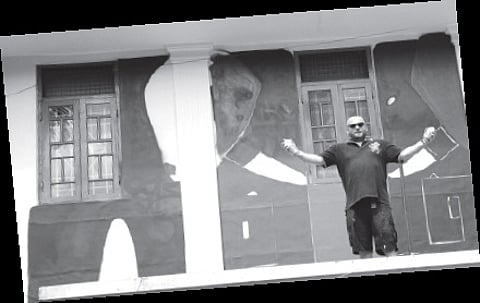

“My art is my excuse to connect with people,” says French Graffiti artist Marko Clement. He is euphoric about his tour to eight Indian cities when we met him at Alliance Franciase Trivandrum. In his heavily accented English, he explains animatedly about how people came up and talked to him when he was drawing a white dove on the streets of Mumbai.
“It was only a day or two after the terror attacks in Paris and I told them the spot was only 10 minutes away from my home in Saint Denis. The people of Mumbai identified with my feelings. They said how sad it is and how sorry they are. They bought me cola. If there was no graffiti, we wouldn’t be talking like that.”
He was just over 15 when he started out as a graffiti artist, inspired by the movement that was taking New York city by storm in the late 1970s. Over the years his art coursed through a compelling blend of calligraphy and abstract painting. True to the spirit of the urban art from that he practices, Marko’s signature style today involves light painting that fuses art with state-of-the-art technology.
The artist, who calls himself Marko93, says that 93 stands for his home district in Saint Denis, a suburb north of Paris. “Back in the days I started people would say - don’t do graffiti, its trash, its violence. But in the last 10 years, things have evolved so much that it is now called by the term street art. And it has even found its way into galleries. Times have changed,” he muses.
Asked what has effected this change, Marko says, “Well, we have certainly outgrown the idea that graffiti is vandalism. People like me who started as kids are still sticking to it and we have evolved our own style, much like your regular artist.”On referring to the cult graffiti artist Bansky, whose real identity has been meticulously kept hidden, Marko breaks into a hearty smile. Some eight years ago, Bansky sold his graffiti for close to one million dollars. And suddenly, people said - one million! graffiti is art! Now that made things easier for the whole lot of us.”
On his Indian tour, Marko painted tigers, doves, and cats on walls in cities like Mumbai, Kolkotta, Banglore and Thiruvananthapuram. He also held light painting workshops in these cities where he demonstrated how paintings are made using hand-held light sources.
“My works are not political in nature. But everywhere people relate to it on the basis of their political and cultural backdrop. And it is then that my graffiti acquires meanings - political or otherwise.”